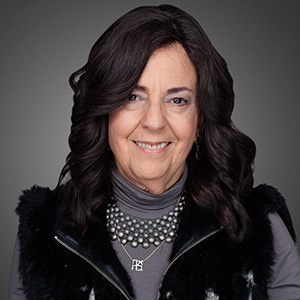Letting Go

When programs guaranteed that they would teach him independence, I usually responded, “Independence — we have that down pat. How are you on dependence training?”

I
wave one more time, my smile belying the knot in the pit of my stomach. Saadya walks down the street to the Avenue and heads to the Q train.
He does a quick turn to return the wave, his smile radiating excitement. Today, he’s fulfilling his dream. Saadya is going to yeshivah.
Saadya will take the train from the station two blocks from our house, to Manhattan. At the 42nd Street–Times Square station, he’ll get off and walk up the staircase. He’ll walk past the maze of corridors and the dozens of signs and arrows pointing in myriad directions.
There will be street performers and missionaries handing out material. At 8 a.m. on a Monday morning, several thousand people will be mindlessly rushing, tunnel vision, to find their particular train, bus, or exit. Saadya will have to maneuver through the crowds, follow the signs to the IRT subway line, and find the correct set of steps. He’ll descend the crowded staircase to the platform for the 1 train uptown to Washington Heights. When he reaches the correct platform, the sign will flash: 1 train to Woodlawn—3 minutes.
Will his fellow passengers notice the dark-haired young man, wearing black slacks, a button-down shirt, black yarmulke on a fresh haircut? Will anyone stop to register that the brown eyes on his handsome face have a distinct shape? If you say hello to Saadya, his friendly answer will have the cadence of a speech impediment. Common signs of Down syndrome.
He and I took this ride together last week. This morning Saadya announced that he was going alone. I knew that the purpose of our joint trips was to reach this goal. But still, his announcement sent my heart racing and a layer of sweat covered my palms. I gave a weak smile and a cheery, “Really, you sure you know the route?”
“Yup, I’m an adult and I can do it.”
He has always considered himself “one of the guys,” has always assured me he knows exactly what he is doing. When programs guaranteed that they would teach him independence, I usually responded, “Independence — we have that down pat. How are you on dependence training?”
The NYPD records show Saadya’s fearless sense of adventure, documenting just how many times they were called in to search for him. Ever since Saadi could walk, fences or double locks on doors did little to deter him. An old friend just mentioned that it was understood by anyone on the block that if you saw Saadi meandering on his own in Flatbush, be sure to check in with his parents. Chances were, we were not aware of his location.
His most infamous adventure involved him wandering around Ground Zero in Lower Manhattan, where an observant and truly heroic (in my opinion) NYPD police officer stopped to inquire why a boy with special-needs was alone in the dark. Meanwhile, a massive search had been ordered by the NYPD. The positive result of that adventure was that it traumatized him into considering MTA trains and buses as off-limits for Saadya Ehrenpreis.
Oops! We could not locate your form.






